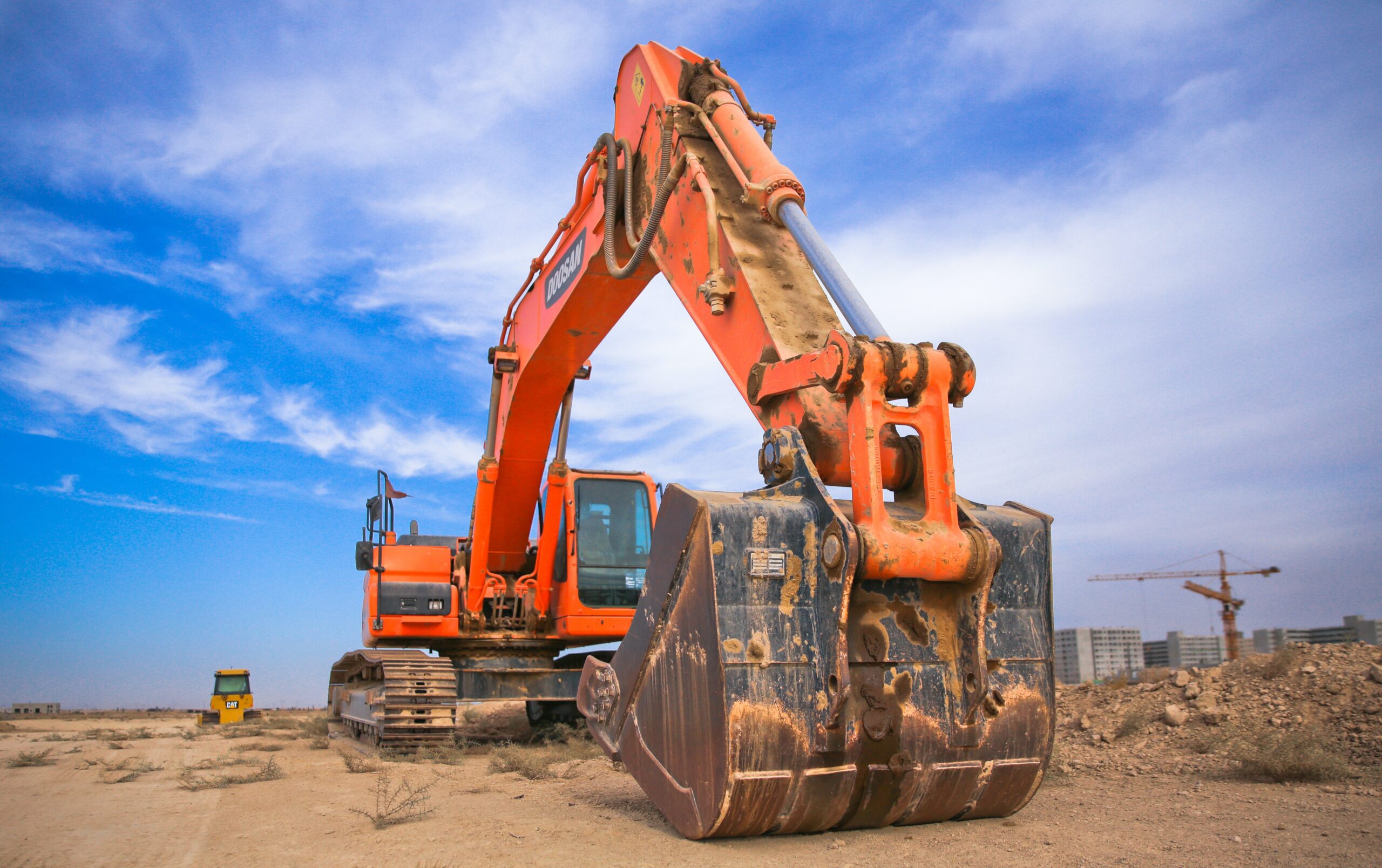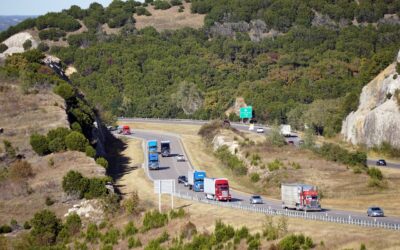We’ve said it before, and we’ll keep saying it: knowing the measurements of your load is essential to safe heavy hauling. Not only is it a hazard to your driver’s safety and the integrity of your equipment to know your dimensions, but it is also important for public safety. Expensive mistakes can happen when drivers cut corners, fail to follow safety protocols or lack experience transporting heavy machinery.
One such incident made the news this summer in Edmonton, Alberta, when the driver failed to secure an excavator properly to his trailer, neglected to pull an oversized load permit, and failed to plan his route. The result? Major damage to an overpass, damage to the equipment, and serious fines on multiple counts of negligence. We much prefer to highlight exceptional drivers in the heavy hauling industry. However, there are valuable lessons that anyone can learn from this incident. Take it as a cautionary tale to not follow in this driver’s footsteps and to be conscious of who you trust with your equipment.
The Anthony Henday – Whitemud Overpass Accident
On June 16th, a truck and trailer carrying an excavator took an exit ramp off a busy Alberta highway that circles the city of Edmonton. The machine, too tall for the maximum height restriction of the overpass, smashed into the underside of the structure, where it became lodged into the overpass, sliding off the trailer.
Thankfully the driver was not injured, nor were any nearby vehicles. The damage to the bridge was so significant it took weeks to assess the structural integrity before an attempt to remove the excavator could be made. Additional supports had to be secured to hold up the overpass before work could begin. The repair timeline and the costs of such an effort have not been confirmed.
The Consequences of the Incident
As of July 19th, 2023, reports say that the driver of the truck hauling the excavator will be charged with five offences under the Alberta Traffic Safety Act, the Highway Development and Protection Act, and the Cargo Securement Standard. This is because the driver did not have the heavy vehicle secured against moving on the trailer; he operated an oversized vehicle on a highway contrary to his permit; and interfered with and damaged a section of highway. The driver is expected to appear in court and could be fined an amount that is upwards of the repair costs on the bridge.
This scenario is definitely a nightmare situation, especially since it could have easily been prevented entirely. Let’s discuss some of the mistakes this driver made and how to ensure you never find yourself in this position during your heavy hauling career or when trusting a driver with your machine.
Lessons to Learn from the Edmonton Excavator Incident
We cannot know what this driver was thinking when he started driving on that June morning, but we do know he made some grave mistakes. Here are the lessons you need to know to avoid such an intense accident.
#1 – Measure Your Equipment
There is a reason why this is the first thing we ask about when you get your free, instant quote with us. Knowing the dimensions of your equipment helps the driver select the best trailer to ensure the load fits the dimension restrictions of public roads. You don’t want to load a tall machine onto a high deck when you have a lowboy trailer available.
#2 – Know What to Measure
In the case of an excavator, it’s especially important to know what to measure. Again, depending on the trailer you have available, you might be able to extend the boom arm so that the total height of the load is lower. When the boom is in a high position, it will make your load higher. Planning in advance will help you know exactly how much space you’ll take up when on the road.
#3 – Weigh Your Load
The weight did not seem to be a primary factor in this accident. However, if the driver knew how heavy the load was, they might have secured the machine differently. We cannot know for sure other than to say weighing your equipment is also necessary. You can consult your operations manual or use our powerful Specs Tool to bet the measurements of a base model or one close to what you have. For accuracy, you’ll want to visit a weigh scale to know for sure.
#4 – Pull Your Permits
Public roadways in North America have restrictions on the size and weight of vehicles that can travel on them. These rules and restrictions help protect the infrastructure and keep regular traffic safe. This doesn’t mean you cannot transport large, heavy things; it just means there are regulations in place to ensure it happens in a safe manner.
When a load is overly high, it runs the risk of hitting things overhead. You’ll need to apply for a permit to transport a load that is oversized in height, then take a route reserved for overly tall loads. Shipments that are extra long or extra wide require permits to travel as well as clear signage and markings to notify surrounding traffic of the unusual size. These markings can include flags, signs, or lights.
It’s also important to note that you’ll need permits in every region you need to drive through. If it’s a local drop-off, you can get your permits in that municipality. If you are crossing provincial or state lines, you’ll need permits in each jurisdiction, so it’s best not to leave this step for the last minute but to plan in advance.
#5 Plan Your Route
Once you know all your specs for your load, you’ll need to plan the safest route. Some roadways will be off-limits because they’re too narrow or too busy with public traffic. Others might be prohibited because the infrastructure cannot support the weight, such as a bridge. Experienced heavy haulers set aside time in advance for their route planning. They prefer to find alternate routes so that when the unexpected happens, they have a way around to minimize delays.
#6 Arrange for a Pilot Car
In some regions, you’ll be required to have a pilot car or escort vehicle travel with you if your load is a certain size. These cars serve multiple purposes. They warn the traffic around you that a large load is on the roadway. If your load extends out the back and is over length, escort vehicles will usually travel behind you to warn oncoming traffic of the hazard. If your load is overly wide, a pilot car will travel in front to notify oncoming traffic they should move to the side when you pass by. Pilot cars or scout cars will also accompany super tall loads to notify the driver of any unexpected hazards that might affect their driving clearance.
#7 Know Your Schedule
The rules and regulations for oversized loads typically restrict you from being on the road during certain times of the month to avoid heavy traffic times such as weekends, holidays, or even low visibility times such as nighttime. It’s essential to know when you’re allowed on the road to keep yourself safe and the road around you.
#8 Secure Your Load
Load securement is safety 101 for heavy equipment transportation. Securing your equipment in the right places using approved ratchet chains or straps keeps your load from shifting or moving during transport. An unsecured load can cause a host of problems, including falling off the trailer into traffic, shifting the weight of the trailer, causing stress and potential damage to your truck, or causing the trailer to sway during transport, potentially causing the driver to lose control.
#9 Hire an Experience Professional
If you want a stress-free experience while moving pieces of machinery, it’s best to hire an experienced professional. They’ll know the exact steps required to get your load moved safely, efficiently and with proper planning in place so no accidents happen.
Industries that Rely on Heavy Equipment Hauling
There are many industries across North America that rely on heavy haul trucking to move their vehicles and machines to and from their jobsites. With thousands of trucks on the roads every day, it’s rare that such a serious incident as the Edmonton excavator accident happens. Still, when you need your construction equipment, oil and gas equipment, farming machinery, or any other heavy load moved, you need a heavy haul company you can rely on.
Connecting Shippers With Haulers in Canada and the United States
Trusted Dispatch is your reliable load board for heavy equipment transportation anywhere in North America. Our drivers are experienced, professional owner-operators with a passion for safely moving large loads. If you need heavy machinery moved, you can start with a free, instant quote and get connected to our load board right away.





